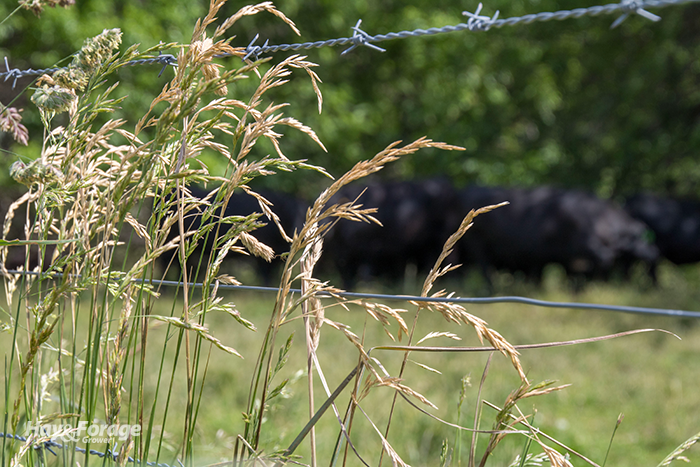
I’m a sucker for old relics and antiques, especially when I know the stories behind them — or within them. So, it’s safe to say my interest was piqued when I flipped through the first issue of Hay & Forage Grower, which was published in March 1986.
Its yellowed pages contained articles about then-current hay prices, new research on minimizing wheel traffic in alfalfa, and recently released forage varieties and harvest equipment. It was neat to get a glimpse of the forage world 40 years ago, although one story in particular traveled back in time even further.
In the article titled “Three findings highlight fescue’s history,” detailed the early events that contributed to tall fescue’s infamous reputation as a toxic forage. Although these events paved the path for future research, the historic findings are still relevant to tall fescue pastures today.
Enter Kentucky 31
The first event occurred in the fall of 1931 when E.N. Fergus, an agronomist at the University of Kentucky, discovered a tall fescue ecotype growing on a hillside. He collected about a pound of seed and used it to develop the Kentucky 31 variety, which was released in 1942. Its superior performance quickly gained popularity among farmers, and shortly after, Kentucky 31 was seeded on millions of acres in the lower Midwest and parts of the South.
Despite its impeccable growth and persistence, Kentucky 31 was soon pointed to as the root of many livestock health issues. Farmers reported cows experiencing lameness and losing parts of their hooves and tails, coining the condition “fescue foot.” Other chronic conditions plagued cattle on Kentucky 31, including poor rate of gain, reduced milk production, reproductive inefficiency, and low fitness in general. The combination of these ailments became known as “fescue toxicosis.”
The second major event in tall fescue’s history occurred some years later in 1973 when Joe Robbins observed two cattle herds in separate tall fescue pastures on a Georgia farm. The USDA Agricultural Research Service scientist noticed one herd displayed the classic symptoms of fescue toxicosis while the other did not. This prompted Robbins and his colleague C. W. Bacon to study the pastures on this farm over the next three years.
By 1976, the scientists discovered the presence of an endophyte in tall fescue, attributing the forage’s toxic effects to the fungus. In fact, they confirmed 100% of the plants in the first pasture were infected with the endophyte, whereas only 10% of plants in the other pasture were.
Overlapping observations
Around the same time, Carl Hoveland, an agronomist at Auburn University, conducted an experiment comparing beef steers grazing newly established tall fescue pastures to cattle on older stands. The former herd performed well while the latter herd suffered from fescue toxicosis. This would become tall fescue’s third defining moment.
In the middle of the experiment, Hoveland got word of Robbins and Bacon’s research in Georgia and began examining tall fescue plants in his own plots for the toxic endophyte. Sure enough, Hoveland discovered a heavy infestation of toxic endophyte in the pastures with sick animals, whereas the newly established plants showed no signs of it. He then replicated the intensively controlled grazing experiment to document the association of toxic endophyte with poor cattle performance.
This is where the 1986 article concludes; however, if it were to continue, it would likely detail the development of endophyte-free tall fescue varieties that were released on the heels of these findings. Despite high hopes that this would solve animal performance issues, researchers and growers quickly realized that removing the endophyte compromised tall fescue persistence. It was a critical protection mechanism for plants, and endophyte-free varieties were not effective.
Then, plant breeders developed novel-endophyte tall fescue varieties. These novel endophytes would provide the protection and persistence of the fungus found in Kentucky 31 without the negative side effects in livestock. Renovating infected tall fescue to a novel variety is one of the mitigation strategies often recommended to farmers today. Considering steep renovation costs, though, many continue to graze old stands of infected plants by reducing the effects of toxic endophyte in other ways.
And to think, the tall fescue conundrum that has caused decades of debate and millions of dollars in livestock losses every year all started with a pound of seed from a hillside in Kentucky.

